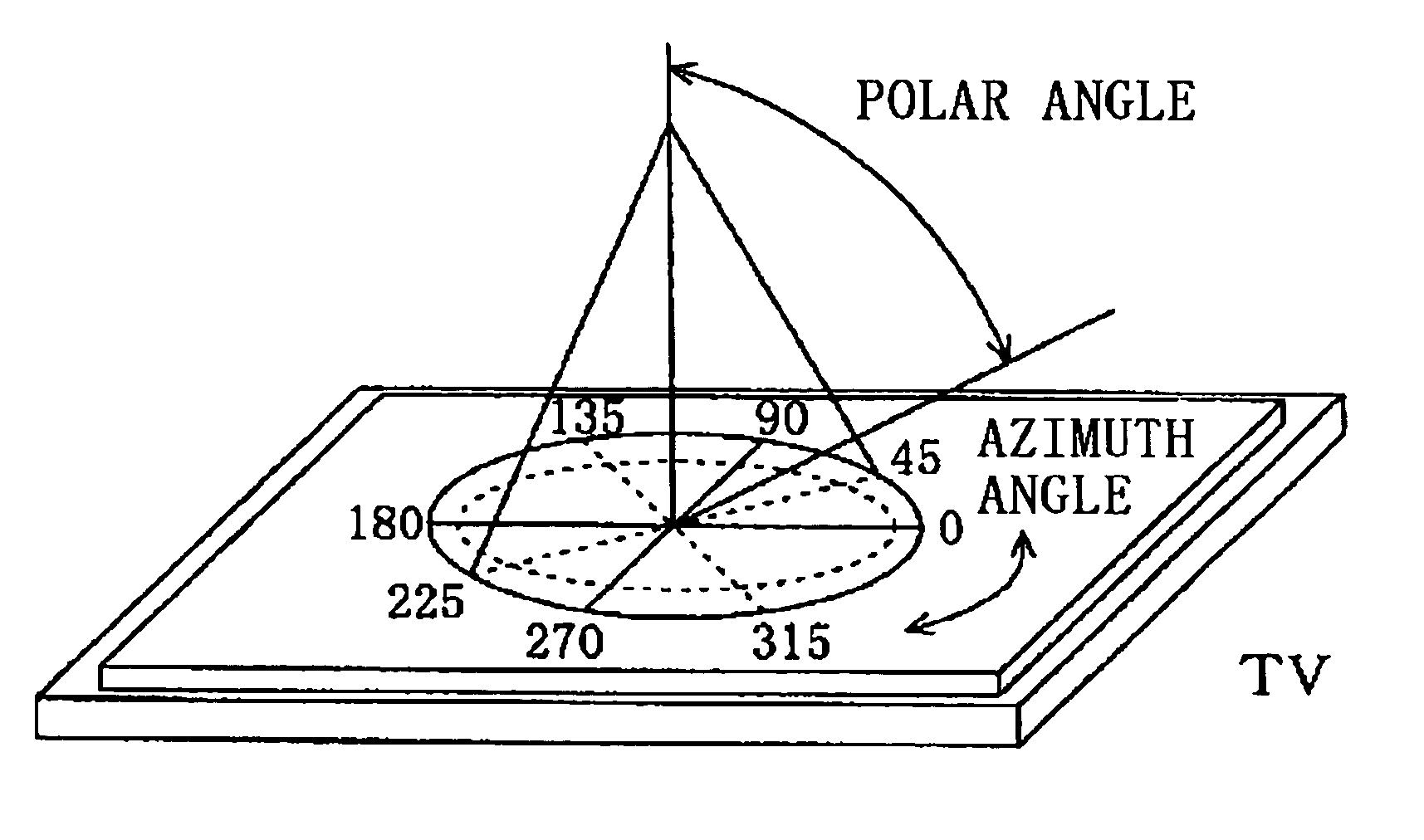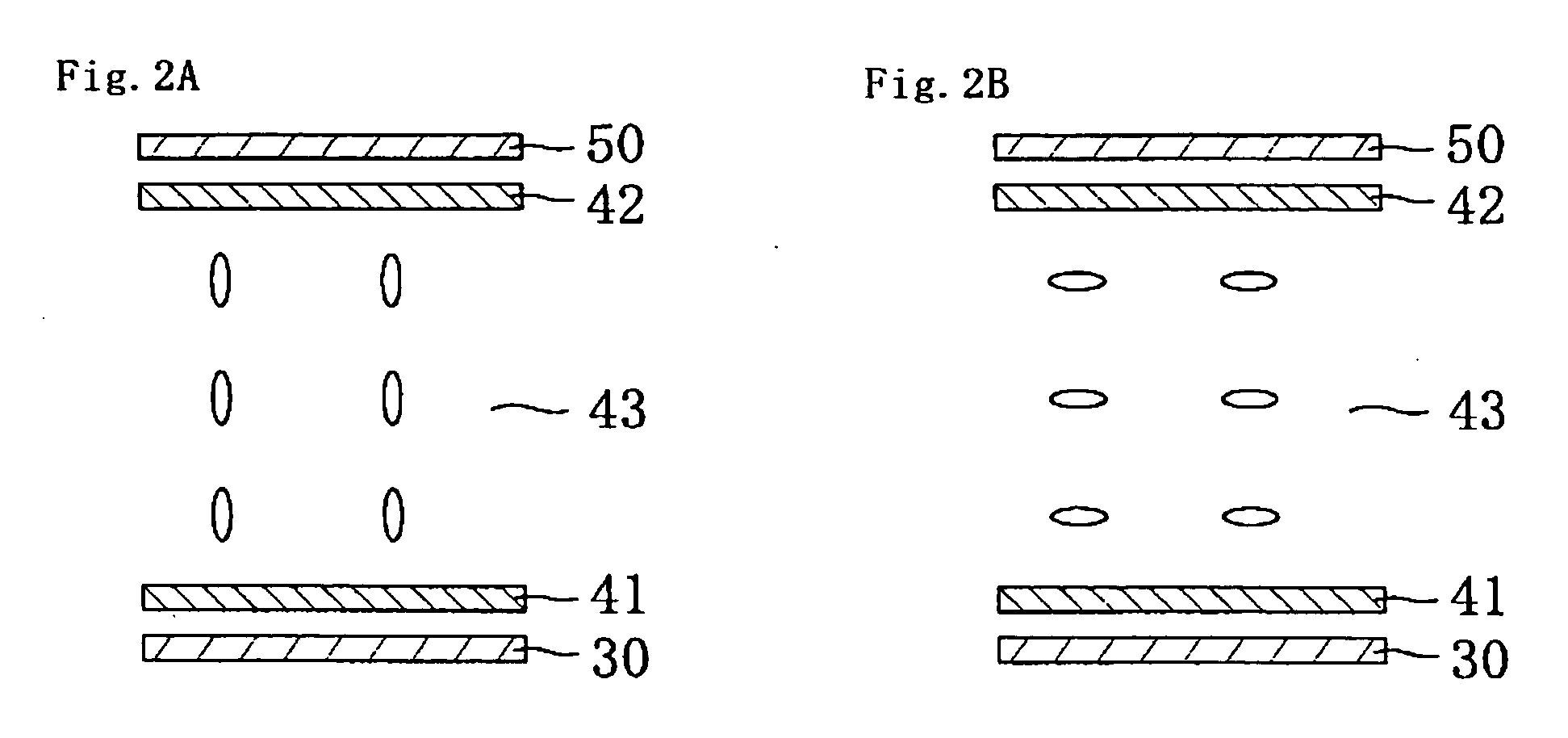Liquid crystal panel and liquid crystal display apparatus
a liquid crystal display and liquid crystal panel technology, applied in non-linear optics, instruments, optics, etc., can solve the problems of increasing color shift, reducing contrast in an oblique direction, and providing increased color shift, etc., to achieve excellent contrast, small color shift, and excellent viewing angle compensation
- Summary
- Abstract
- Description
- Claims
- Application Information
AI Technical Summary
Benefits of technology
Problems solved by technology
Method used
Image
Examples
reference example 1
Production of Cellulose-Based Film (1)
[0205] Cyclopentanone was applied to polyethylene terephthalate, and the whole was attached to a triacetyl cellulose film having a thickness of 40 μm (“UZ-TAC”, trade name, available from Fuji Photo Film Co., Ltd., Re(590)=3 nm, Rth(590)=40 nm). The resultant was dried at 100° C. for 5 minutes, and the polyethylene terephthalate film was peeled off after drying. The obtained cellulose-based film (1) had Re(590) of 0.2 nm and Rth(590) of 5.4 nm.
reference example 2
Production of Cellulose-Based Film (2)
[0206] A norbornene-based resin was dissolved in cyclopentanone, to thereby prepare a solution containing 20 wt % of a solid content. This solution was applied to a triacetyl cellulose film having a thickness of 40 μm (“UZ-TAC”, trade name, available from Fuji Photo Film Co., Ltd., Re(590)=3 nm, Rth(590)=40 nm) to a thickness of 150 μm. The resultant was dried at 140° C. for 3 minutes, and the norbornene-based resin film formed on a surface of the triacetyl cellulose film was peeled off after drying. The obtained cellulose-based film (2) had Re(590) of 1.1 nm and Rth(590) of 3.4 nm.
reference example 3
Production of Cellulose-Based Film (3)
[0207] A solution was prepared by dissolving 18 parts by weight of dibutyl phthalate as a plasticizer with respect to 100 parts by weight of aliphatic acid cellulose ester having a degree of acetic acid substitution of 2.2 and a degree of propionic acid substitution of 0.7 in 570 parts by weight of acetone as a solvent. This solution was applied to a stainless steel plate through a general flow casting method, dried, and peeled off from the stainless steel plate, to thereby obtain a cellulose-based film (3) having a thickness of 80 μm. The obtained cellulose-based film (3) had Re(590) of 3.1 nm and Rth(590) of 3.1 nm. The degree of substitution of the aliphatic acid cellulose ester was measured in accordance with ASTM-D-817-91 (Methods of Testing Cellulose Acetate and the like).
PUM
 Login to View More
Login to View More Abstract
Description
Claims
Application Information
 Login to View More
Login to View More - R&D
- Intellectual Property
- Life Sciences
- Materials
- Tech Scout
- Unparalleled Data Quality
- Higher Quality Content
- 60% Fewer Hallucinations
Browse by: Latest US Patents, China's latest patents, Technical Efficacy Thesaurus, Application Domain, Technology Topic, Popular Technical Reports.
© 2025 PatSnap. All rights reserved.Legal|Privacy policy|Modern Slavery Act Transparency Statement|Sitemap|About US| Contact US: help@patsnap.com



